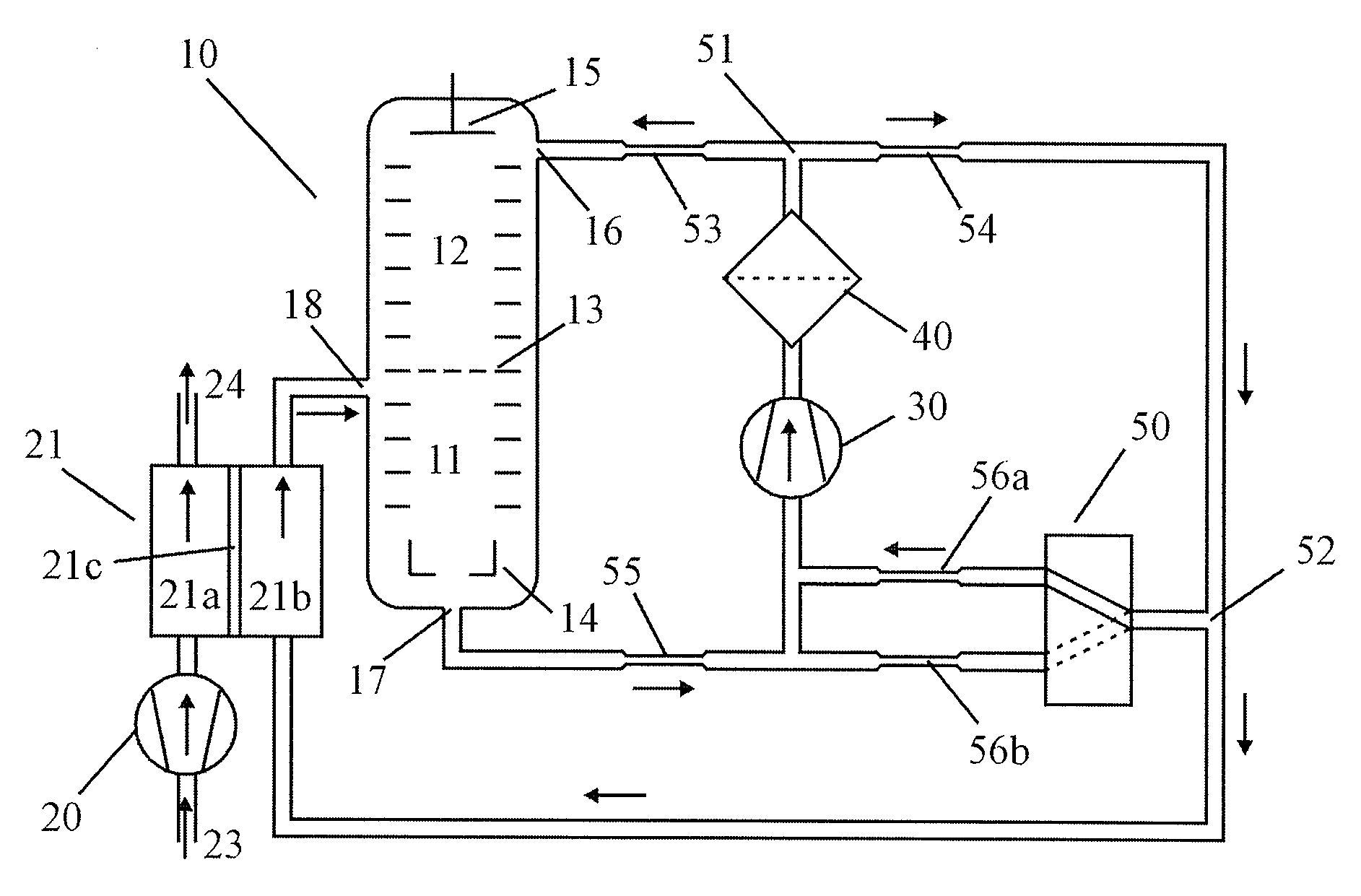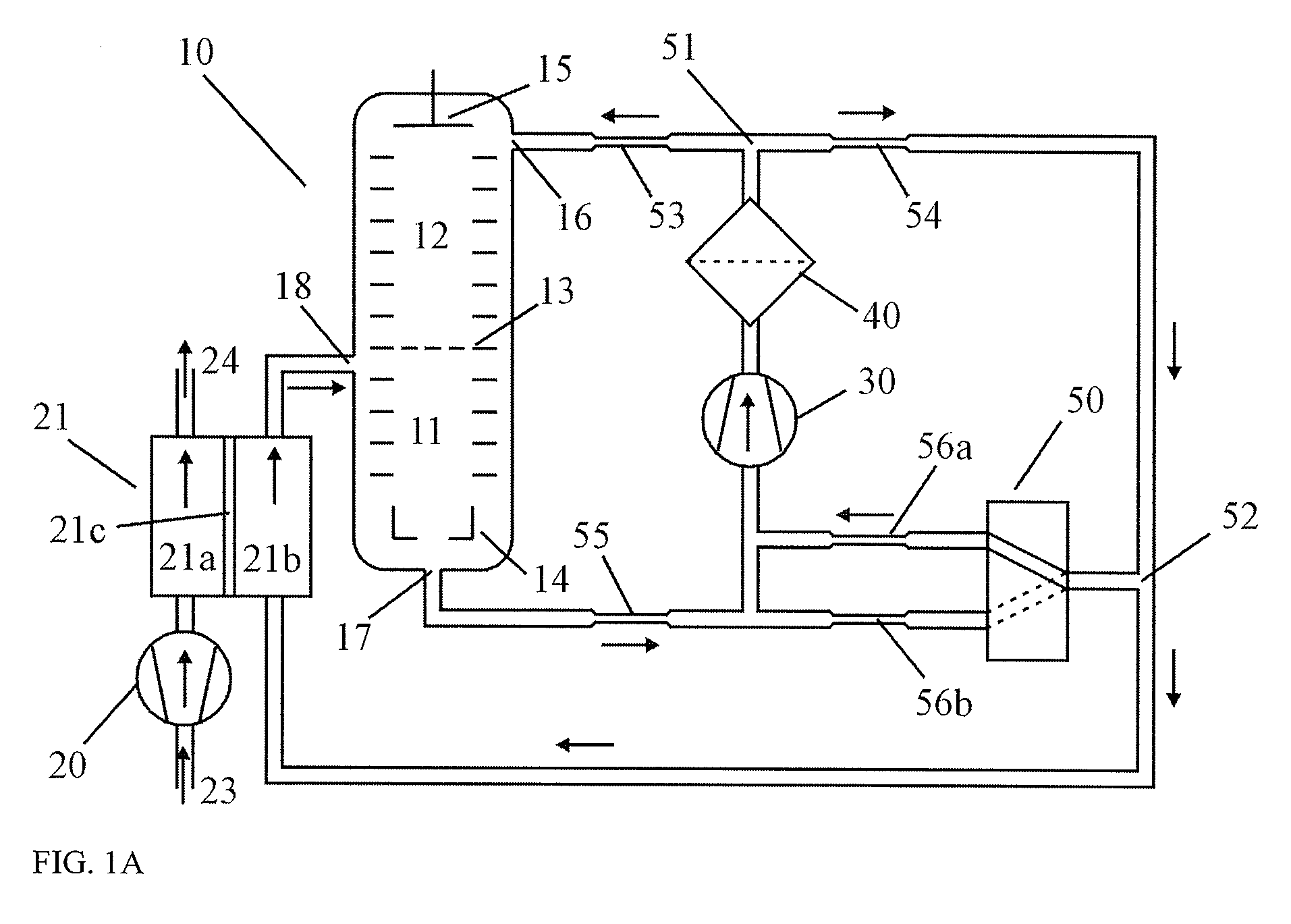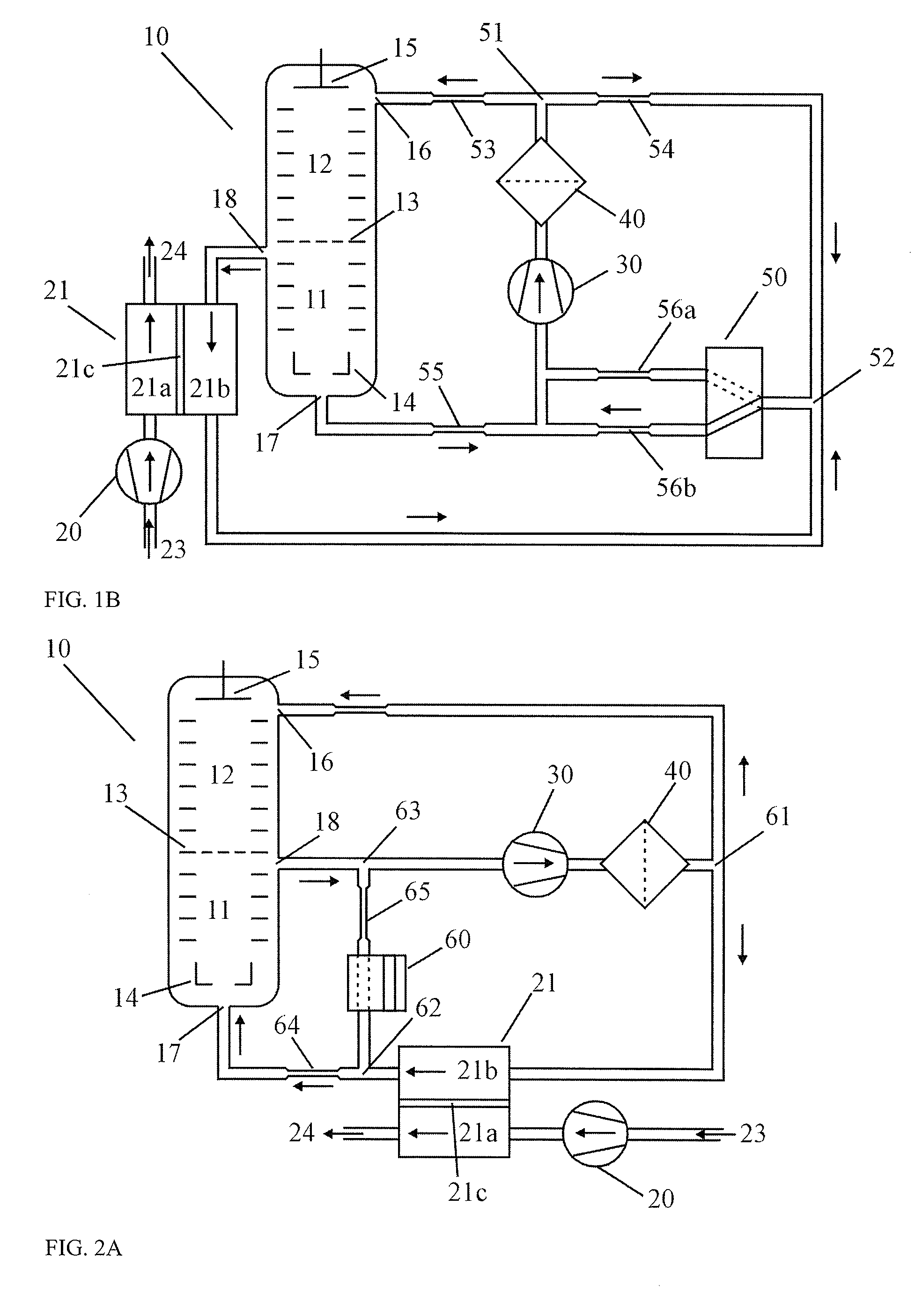Ion mobility spectrometer and method for operation
a technology of mobility spectrometer and ion beam, which is applied in the direction of mass spectrometer, separation process, instruments, etc., can solve the problems of not being realistically able to modify the parameters during operation, the inability to detect other analyte substances, etc., to achieve the effect of reducing the amount of analyte substances flowing, avoiding oversaturation, and reducing the concentration
- Summary
- Abstract
- Description
- Claims
- Application Information
AI Technical Summary
Benefits of technology
Problems solved by technology
Method used
Image
Examples
first embodiment
[0031]In a first embodiment, to control the quantity of circulating gas with analyte substances that flows into the measuring tube, the flow into the measuring tube periodically reverses by switching valves in a suitably designed internal gas circuit. The periodic reversal constitutes a metering phase and an isolation phase of a measurement method.
[0032]FIGS. 1A and 1B illustrate the two phases of the measurement method. Within the ion mobility spectrometer, the circulating gas that has been cleaned in the filter 40 is divided at the branching point 51, flowing partially into the drift chamber 12 and partially into the center connection of the changeover valve 50. Depending on the setting of the changeover valve 50, circulating gas is transported from the center connection back to the gas pump 30 either through the high resistance restriction 56a or the low resistance restriction 56b. Circulating gas is drawn out of the reaction chamber 11 through the gas connection 17 and flows to ...
second embodiment
[0038]In a second embodiment illustrated in FIGS. 2A and 2B, a controllable by-pass causes a reduction of the analyte-containing gas flow into the measuring tube 10. The operation of a switching valve 60 in connection with a restriction 65 allows the quantity of analyte-containing circulating gas flowing into the reaction chamber 11 to be reduced in order to adapt the measuring range of the ion mobility spectrometer to high substance concentrations at a sampling location.
[0039]The analyte-containing circulating gas flowing from the membrane inlet 21 is divided between the two parallel branches through the measuring tube 10 and through the switching valve 60. The ratio of the gas flow in the two branches is inversely proportional to the flow resistances. For example, where the flow resistance 65 of the side branch through the switching valve 60 is only 1 / 9 of the flow resistance 64 of the other branch through the reaction chamber 11, then only 1 / 10 of the analyte-containing circulati...
fourth embodiment
[0050]FIGS. 4A and 4B illustrate a fourth embodiment that switches between gas flows from two membrane inlets 21 and 22 of, for example, very different permeability to adapt sensitivity to analyte substance concentrations. The switching is performed by valve 80. In the present example, the two membranes 21c, 22c may have different areas, different thicknesses and / or may be comprised of different materials.
PUM
| Property | Measurement | Unit |
|---|---|---|
| humidity | aaaaa | aaaaa |
| humidity | aaaaa | aaaaa |
| ion mobility | aaaaa | aaaaa |
Abstract
Description
Claims
Application Information
 Login to View More
Login to View More - R&D
- Intellectual Property
- Life Sciences
- Materials
- Tech Scout
- Unparalleled Data Quality
- Higher Quality Content
- 60% Fewer Hallucinations
Browse by: Latest US Patents, China's latest patents, Technical Efficacy Thesaurus, Application Domain, Technology Topic, Popular Technical Reports.
© 2025 PatSnap. All rights reserved.Legal|Privacy policy|Modern Slavery Act Transparency Statement|Sitemap|About US| Contact US: help@patsnap.com



